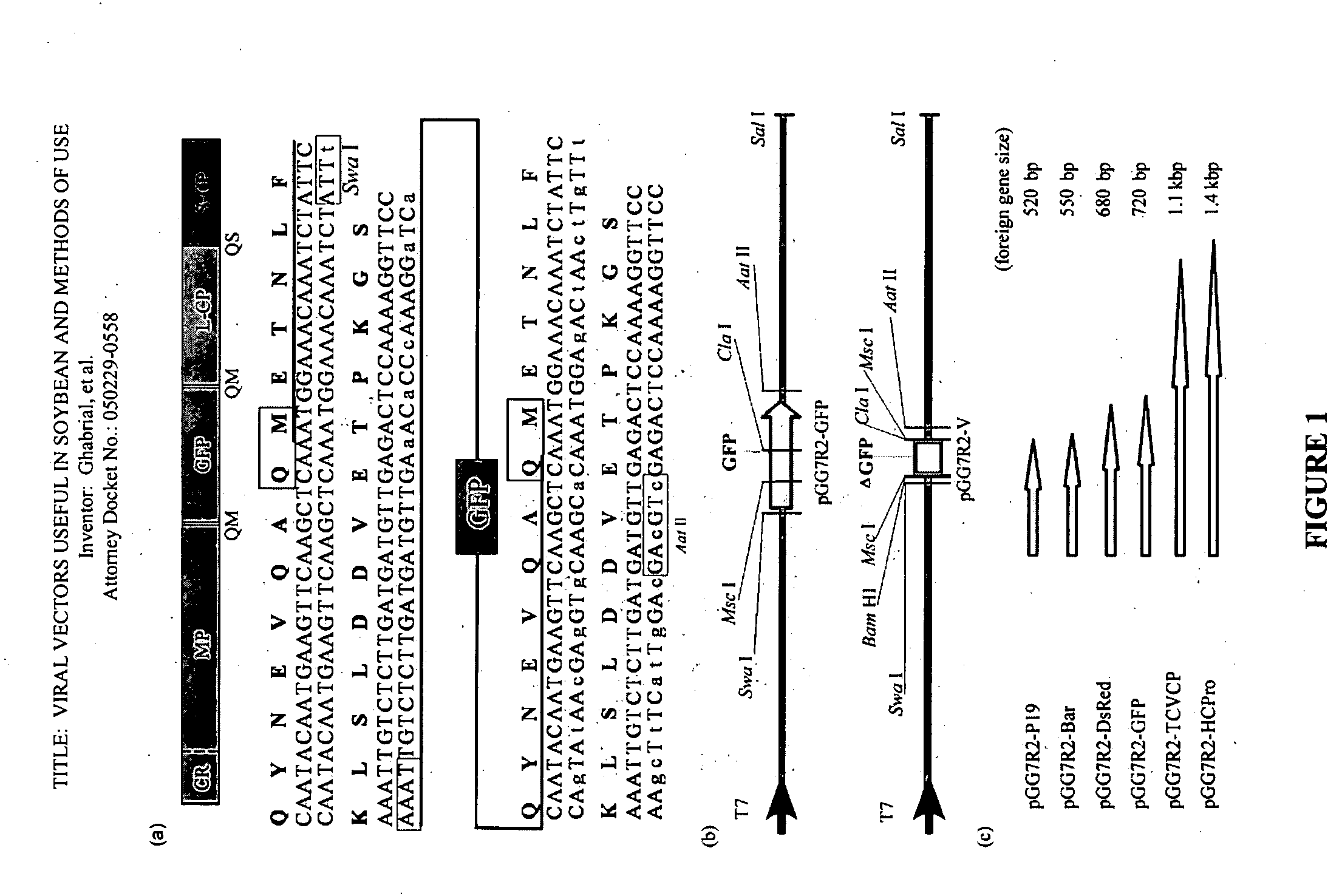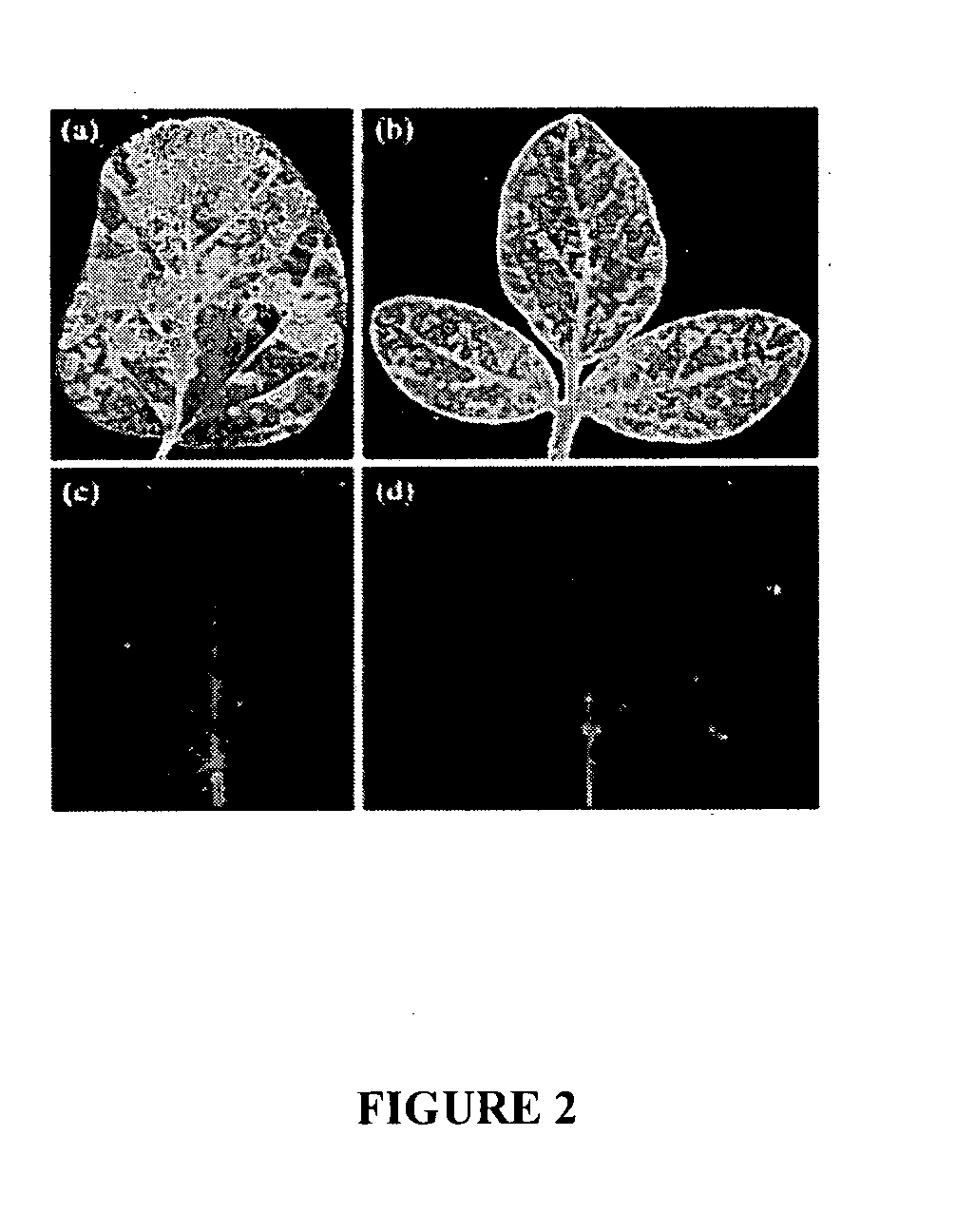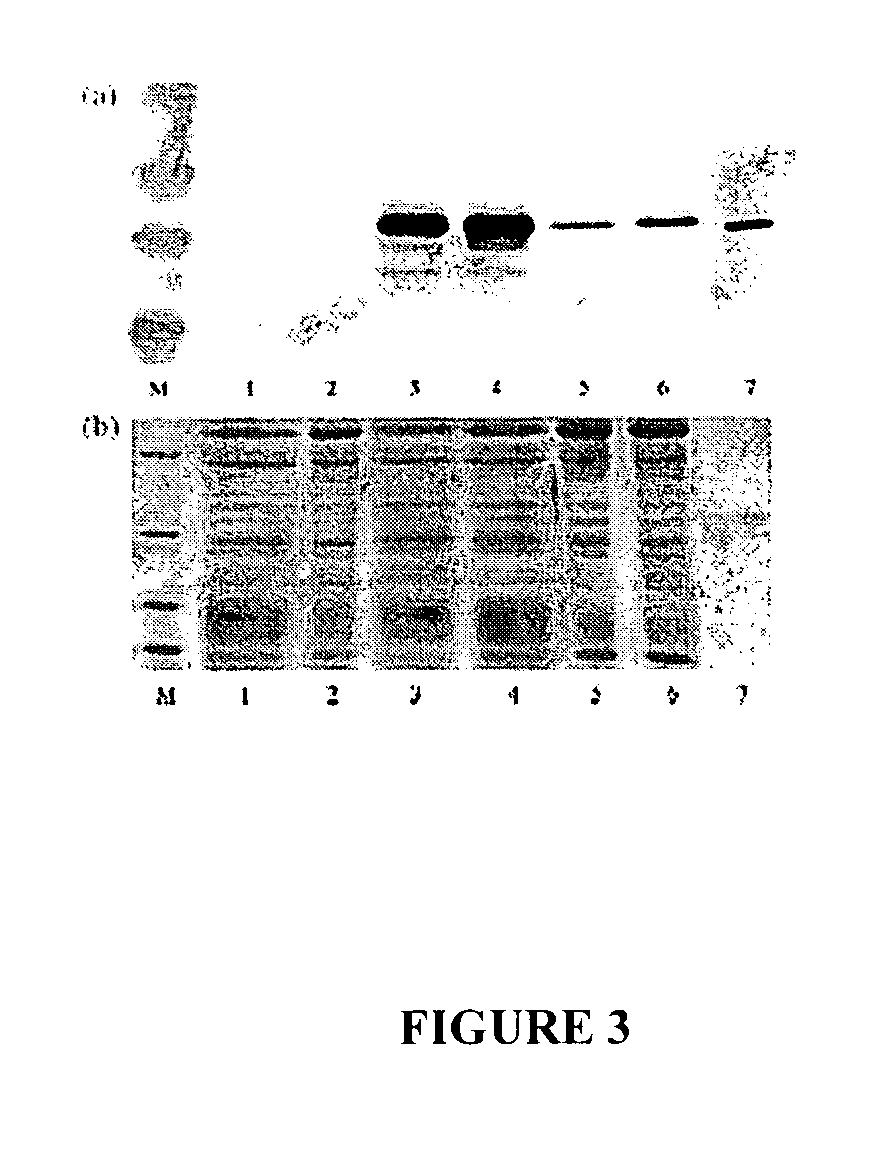Viral vectors useful in soybean and methods of use
- Summary
- Abstract
- Description
- Claims
- Application Information
AI Technical Summary
Benefits of technology
Problems solved by technology
Method used
Image
Examples
example i
Methods for Generation and Analysis of BPMV Vectors
[0042] Virus strains. BPMV strains KY-Hopkins 1 (K-Hol), KY-Hancock 1 (K-Hal), and KY-Graves 7 (K-G7) have been previously described, and their complete nucleotides sequences have been reported (Gu et al., Phytopathology 92:446-452 (2002); Gu and Ghabrial, Virology 333:271-283 (2005), each of which is incorporated herein by reference). The nucleotide sequences are available at GenBank: K-G7, accession No. U70866 (version dated Mar. 16, 2001, which is incorporated herein by referenc) and accession No. M62738 (version dated Apr. 28, 1993, which is incorporated herein by reference); K-Hal, RNA1, accession No. AF394606 (version dated Feb. 25, 2005, which is incorporated herein by reference), RNA2, accession No. AF394607 (version dated Feb. 25, 2005, which is incorporated herein by reference); K-Hol, RNA1, accession No. AF394608 (version dated Feb. 25, 2005, which is incorporated herein by reference), RNA2, accession No. AF394609 (versi...
example ii
Construction of BPMV RNA2 Vectors
[0056] For development of BPMV as a viral vector for expression of heterologous proteins in soybean, the gene of interest was inserted into the RNA2-encoded polyprotein ORF between the MP and the L-CP coding regions. Additional proteinase cleavage sites were created to flank the foreign protein by duplicating the MP-LCP cleavage site (as exemplified by the GFP gene construct in FIG. 1A). The coding sequences for the 8 C-terminal amino acids of the MP and the 19 N-terminal amino acids of the L-CP were included for efficient processing. To minimize the chances of homologous recombination, thus instability, the third nucleotide in each codon was changed based on codon degeneracy (in accordance with BPMV codon usage) so that the encoded amino acid residues remained unchanged (FIG. 1A). Initially, BPMV recombinant vectors expressing GFP or DsRed were constructed and shown to be infectious and stable. Under greenhouse conditions, the GFP construct was pas...
example iii
Expression Levels of Foreign Genes from BPMV Vectors
[0059] The recombinant BPMV-GFP constructs were used to evaluate foreign gene expression levels in soybean. The primary leaves of 7- to 10-day-old soybean seedlings were inoculated with the BPMV-GFP constructs derived from either subgroup I or subgroup II BPMV RNA2. Three weeks postinoculation, total soluble proteins were extracted from the first and second trifoliolate leaves and subjected to Western blot analysis (FIG. 3). Affinity-purified His-tagged GFP, which was expressed in E. coli, was used as a control (FIG. 3, lane 7). Interestingly, the expression level provided by subgroup I RNA2 vectors was higher than that obtained with subgroup II RNA2 vectors in both the first and second trifoliolate leaves (compare lanes 3 and 5, FIG. 3). To assess the GFP expression level, the Western blot was scanned, and the generated images of band intensity were analyzed by the ImageQuant™ v5.2 program (Amersham). The results indicated that G...
PUM
 Login to View More
Login to View More Abstract
Description
Claims
Application Information
 Login to View More
Login to View More - R&D
- Intellectual Property
- Life Sciences
- Materials
- Tech Scout
- Unparalleled Data Quality
- Higher Quality Content
- 60% Fewer Hallucinations
Browse by: Latest US Patents, China's latest patents, Technical Efficacy Thesaurus, Application Domain, Technology Topic, Popular Technical Reports.
© 2025 PatSnap. All rights reserved.Legal|Privacy policy|Modern Slavery Act Transparency Statement|Sitemap|About US| Contact US: help@patsnap.com



